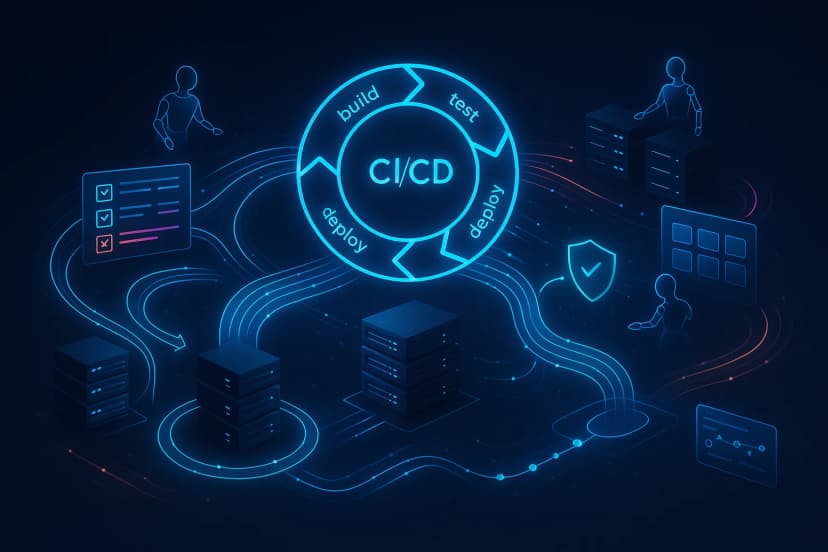In the fast-paced world of modern data engineering, speed and quality must go hand in hand. Agile teams deploy data pipelines more frequently, and CI/CD pipelines have become the backbone of delivery. Yet, without automated ETL testing, these pipelines risk delivering inaccurate, incomplete, or inconsistent data to critical business systems.
Automated ETL testing replaces manual checks with repeatable, scalable validation that runs at every code change or scheduled job. This approach not only improves accuracy but also aligns with DevOps and DataOps principles, allowing QA to move at the speed of development.
Why Automated ETL Testing is Essential in 2025
The growing complexity of ETL pipelines makes manual validation impractical. Modern pipelines often pull data from APIs, IoT devices, real-time streams, and traditional databases simultaneously. Each transformation step introduces the potential for logic errors, schema mismatches, and data loss.
Automated testing ensures that:
- Every pipeline run validates business rules and data integrity.
- Defects are caught early in the development lifecycle, not after deployment.
- Compliance requirements (GDPR, HIPAA, PCI DSS) are consistently met.
In Agile and CI/CD setups, automation is the only way to keep testing in sync with frequent changes.
Core Principles of Automated ETL Testing
Automated ETL QA requires more than running scripts — it demands a structured framework that integrates into your delivery pipeline.
- Continuous Validation
Tests must run automatically with each code commit, ETL job execution, or scheduled refresh. - Data Source Agnosticism
The automation framework should validate data across relational databases, cloud warehouses, APIs, and flat files. - Rule-Driven Testing
Transformations must be verified against defined business rules, not just schema structures. - Performance & Scalability
Automation should handle millions of rows without degrading CI/CD pipeline performance.
Best Practices for Implementing Automated ETL Testing
While the specifics vary by organization, certain best practices apply universally.
1. Integrate Testing into CI/CD
Automated ETL tests should run as part of your CI/CD pipeline, triggered by changes in ETL scripts, transformation logic, or configuration files.
2. Maintain a Modular Test Framework
Separating test logic from execution code makes it easier to adapt to new data sources and rules.
3. Leverage Test Data Management (TDM)
Use controlled, synthetic datasets to validate transformations while protecting sensitive production data.
4. Monitor Historical Trends
Automation should track metrics such as load times, row counts, and error rates over time to detect subtle degradations.
5. Enable Detailed Reporting
Your automation suite should output reports that are easy for both engineers and business stakeholders to interpret.
Common Challenges in Automated ETL Testing
Even experienced teams can encounter pitfalls:
- Flaky Tests caused by non-deterministic data sources like APIs or streaming platforms.
- Overdependence on Production Data, which can cause privacy issues or lead to unpredictable results.
- Test Maintenance Overhead when business rules change frequently.
- Slow Execution due to inefficient queries or poorly optimized validation logic.
These challenges can be mitigated by designing resilient, modular test suites and by incorporating mocking, virtualization, and caching strategies.
Comparison Table: Automated ETL Testing Tools for CI/CD
| Tool / Framework | CI/CD Integration | Data Source Coverage | Notable Features |
| QuerySurge | Native Jenkins, GitLab CI | Databases, Hadoop, Cloud DWs | Data-to-data and BI validation, detailed dashboards |
| Great Expectations | Airflow, Prefect, Jenkins | Files, DBs, APIs | Python-based validation rules, strong community |
| Datagaps ETL Validator | GitHub Actions, Azure DevOps | ETL/ELT pipelines, cloud services | Built-in connectors, end-to-end validation |
| Apache Griffin | Scheduler integration | Big Data ecosystems | Real-time data quality monitoring |
Real-World Implementation Example
A healthcare analytics provider moved from quarterly ETL releases to bi-weekly updates using Azure Data Factory. Manual testing was slowing down deployment cycles and increasing compliance risks. By adopting Great Expectations integrated with Azure DevOps pipelines, they:
- Reduced QA cycle time by 65%
- Increased defect detection before production by 40%
- Passed GDPR audits with zero data quality violations
Automation Workflow for CI/CD ETL Testing
A typical automated ETL testing workflow in CI/CD involves:
- Code Commit – Developer pushes ETL code or configuration changes.
- Pipeline Trigger – CI/CD platform initiates build and test sequence.
- Data Validation Stage – Automation framework runs extraction, transformation, and load tests.
- Report Generation – Test results are sent to QA dashboards and stakeholders.
- Deploy or Rollback – Deployment proceeds if tests pass, or rolls back if issues are found.
Future Trends in Automated ETL Testing
Looking ahead, automation will incorporate:
- AI-Powered Data Anomaly Detection to identify unexpected patterns.
- Self-Healing Pipelines that automatically adjust transformations based on validation feedback.
- Shift-Left Testing where QA runs in developer environments before code even hits the main branch.
Final Thoughts
Automated ETL testing is no longer a “nice to have” — it’s the foundation for delivering trusted, compliant, and high-performance data pipelines in Agile and CI/CD environments. By investing in the right tools, processes, and practices, organizations can accelerate delivery without sacrificing data quality.
Ready to Automate Your ETL QA?
Testriq specializes in end-to-end ETL automation frameworks, CI/CD integration, and performance optimization for data engineering teams.
Contact Us to explore a custom solution.
About Jayesh Mistry
Expert in AI Application Testing with years of experience in software testing and quality assurance.
Found this article helpful?
Share it with your team!
